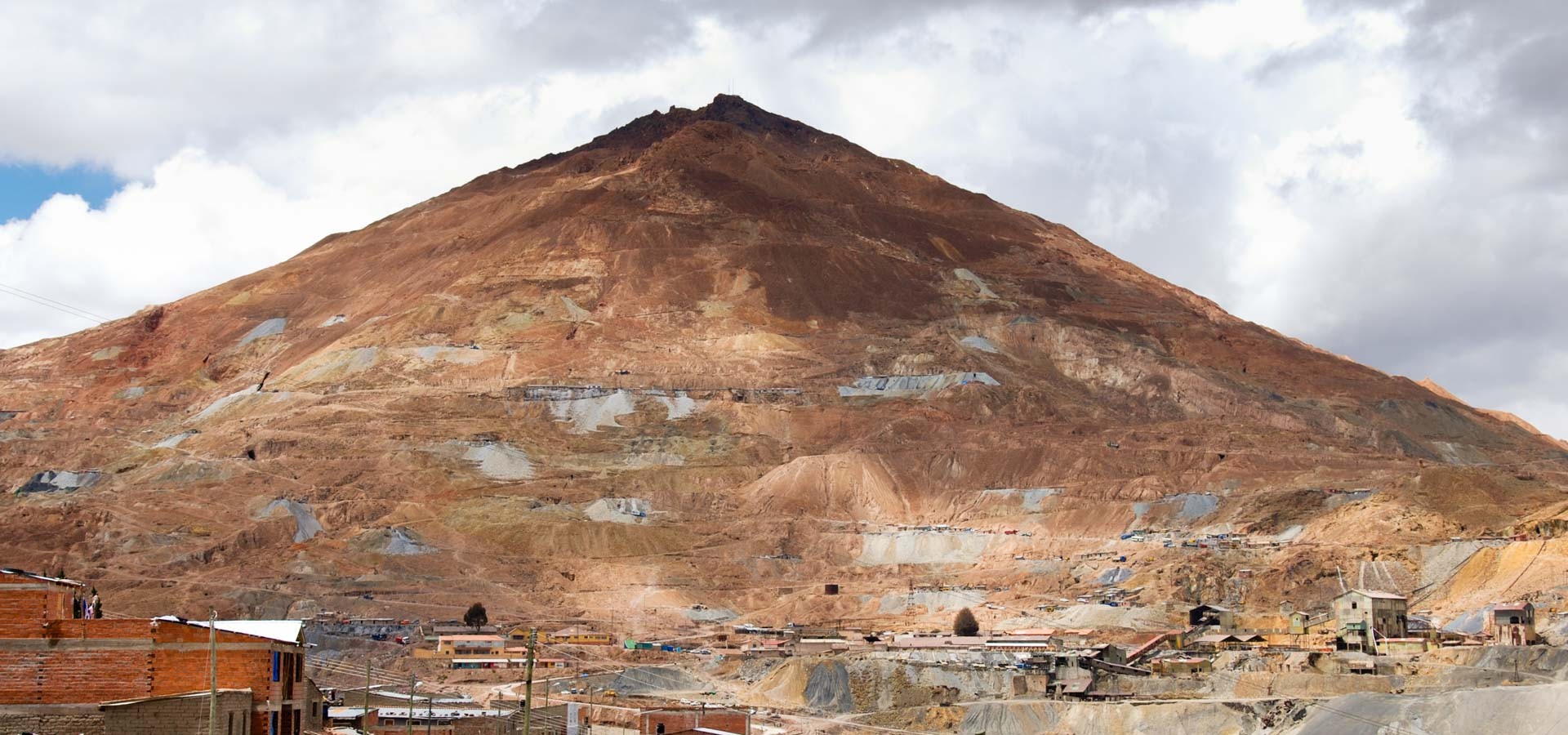Discovering The Working Conditions Of The “Devil’s Miners”
Already in 1545, the Spanish were aware of the enormous wealth inside of Cerro Rico and forced thousands of Indigenous to work in the mines extracting the huge deposits of silver. To increase production, the “Ley de Mita” was passed that forced Indigenous and later African slaves to work 16 hour shifts. They were kept underground for 4 months. The working conditions were beyond description and an estimated 8 to 10 million died of the forced labor over the three century of Spanish rule! Nobody knows how much silver was taken out of Cerro Rico during colonial times, but a popular estimate claims that is was enough to build a bridge made of the very metal across the Atlantic.
Today, about 15.000 miners work in Cerro Rico, only independent cooperatives who must buy their own equipment and sell the ore to the privately owned smelters. Nowadays it is tin, zinc, led and also silver the miners are after. But very little has changed concerning the working conditions: dust, toxic fumes, temperatures of up to 54 degrees Celcius, accidents due to a complete lack of safety standards, primitive equipment.
Extreme poverty forces 2.000 children, all younger than 14, to work in the mines, mostly orphans. After working 10-15 years most miners develop silicosis pneumonia, those working with powered drills after two years. Life expectancy among miners is 40 – 45 years, 20 years less than the already low level for Bolivia.
As soon as you enter the mine you start swallowing dust. It is extremely hard to breathe, especially while crawling on your knees through extremely low passages. It is hot… And we were just moving around and not further down than level 3: there are mines with 16 levels. So we were kept in a relatively cozy environment, even so a few times we thought of quitting.
We had the chance to talk to various groups of miners all doing different job, like chiseling a hole into the rock with a hammer. All the ore is extracted by putting dynamite into these holes, in colonial times wood was driven into these holes and than water was put over it. Other men were carrying rocks in bags crawling through passages not higher than 50 cm. Others were pushing carts with rocks weighing 2 tons and shoveling these rocks into baskets to be pulled up to the surface.
At times we felt truly ashamed of watching these people slaving away, while we were busy breathing. On the other hand we felt they took great pride in the fact that their job is so hard that people take the effort to come down into the mines to see. One group of sixty miners moves 120 tons of rocks to the surface per day. That is 2 tons per person! But again, no matter how hard one tries to describe this kind of work, it is impossible.
Every mine has a Tio, a devilish-looking creature that has to be kept content by offering coca leaves, alcohol, cigarettes. Otherwise he would bring harm upon the miners.
To take tourists down the mines is nothing new, it started about twenty years ago, but under different conditions – without helmets, one torch for a group and off they went. We do not know how they managed, because we constantly banged our heads against the rock. And the individual headlamps kept you from panicking if the group was a bit ahead.
Since 1997 Cerro Rico is an UNESCO World Heritage Site commemorating its tragic history. The dark side of this coin is that mining done on the outside is restricted.
More information about traveling to Bolivia ? http://grandescapades.net/travel-guide-to-bolivia




